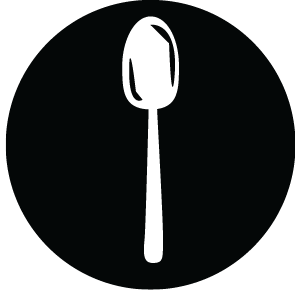Few things probably seem more natural for many of us than the only eating pattern we know: breakfast, lunch, and dinners. That is how life is. And that is how it has always been. Or maybe not? This way of organizing our eating pattern is almost a religious practice for the majority of us.

the5th on unsplash
Yet I hardly ask the question—and I think I speak on behalf of many people—of why we do it this way. I could fill tens of books writing the times I have been told "breakfast is the most important meal of the day." But rarely if ever I get an explanation of why this is.
So I felt intrigued to try to understand how the breakfast, lunch and dinner dietary regime came to be so popular and how good it is to eat like this.

nirzar on unsplash
The origins of our eating patterns seem to be tied to the organization of work in relatively modern times. Throughout history, it was common to have either a meal a day, to eat when your stomach started growling or when there was enough food. Increases in food availability and a work schedule similar to that of today in the industrial revolution brought about some changes.

henriquefelix on unsplash
Workers were happy going to work in the morning after enjoying a nice meal. Halfway through the day, they would gobble up on something to keep them from losing their energies. After an exhausting day they would go back home and have dinner. And voila! Thus was created the eating pattern many of us hold sacred today.

itstamaramenzi on unsplash
However, it must not be forgotten that this emerged in a particular context, so it was fairly practical for people living a specific lifestyle. Many of us adhere to this schedule but live very differently. We simply assume this is how it should be.
The ways people ate before this and even the rise of today’s eating schedules were mostly tied to necessity, availability and convenience. But for many of us, the three meals day might have little to do with any of these but more so to do with habit.
Some historians and scientists today reach the same conclusion: eating three daily meals is related to cultural rather than biological reasons. It emerged in Europe and quickly spread throughout colonies in America as it was actually convenient for many people. It was not very long until it became a common habit.

sagarcia on unsplash
Studies suggest this does not promote many health benefits like weight loss, so it might not be too adequate when thinking of our well-being. At the same time, experiments on mice might even point to diseases like diabetes being more likely when eating three times a day.
"So what should I do?" you might be asking. "What is the magic formula?" Unfortunately, there is probably no one size fits all. Your activities as well as metabolism are some of the best indicators to determine a good eating pattern. Eating three times a day might still be a good option for many folks but it is better you start thinking and researching to find what is best for you.

worthyofelegance on unsplash
Practices like intermittent fasting have gained a lot of ground recently. This is when you reduce the time span over which you eat during a day and then fast for a certain amount of hours. Its followers can be happy that research seems to be showing health benefits from this but this area of study is still in its early childhood, so they cannot sing victory yet.

szolkin on unsplash
While intermittent fasting can be a good alternative, it might not work for some people for different reasons. This does not mean you should go back to the ad nauseam eating pattern. We should pay more attention to our stomach and eat it when it really asks for food. I cannot stress the importance of thinking, researching, experimenting or consulting with nutritionists on what works best for each individual to stay healthy.




